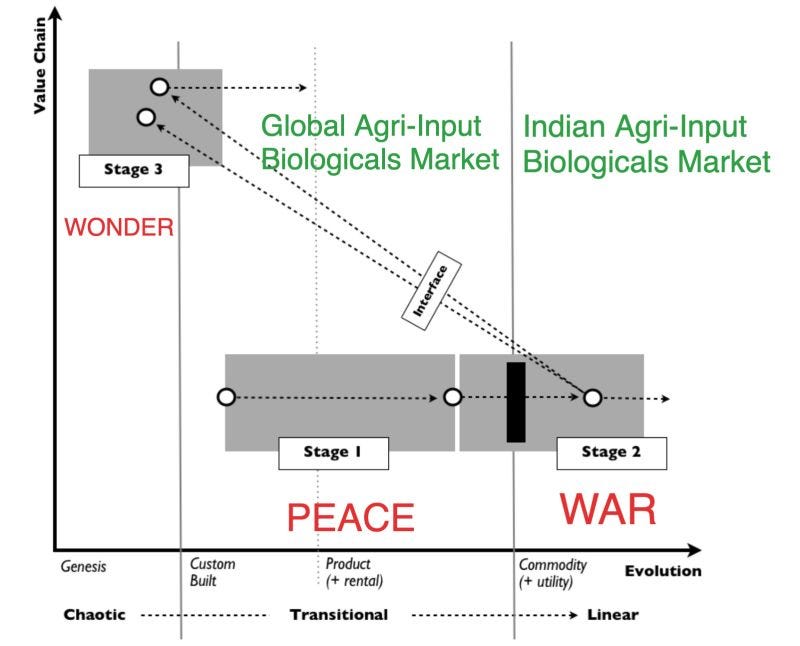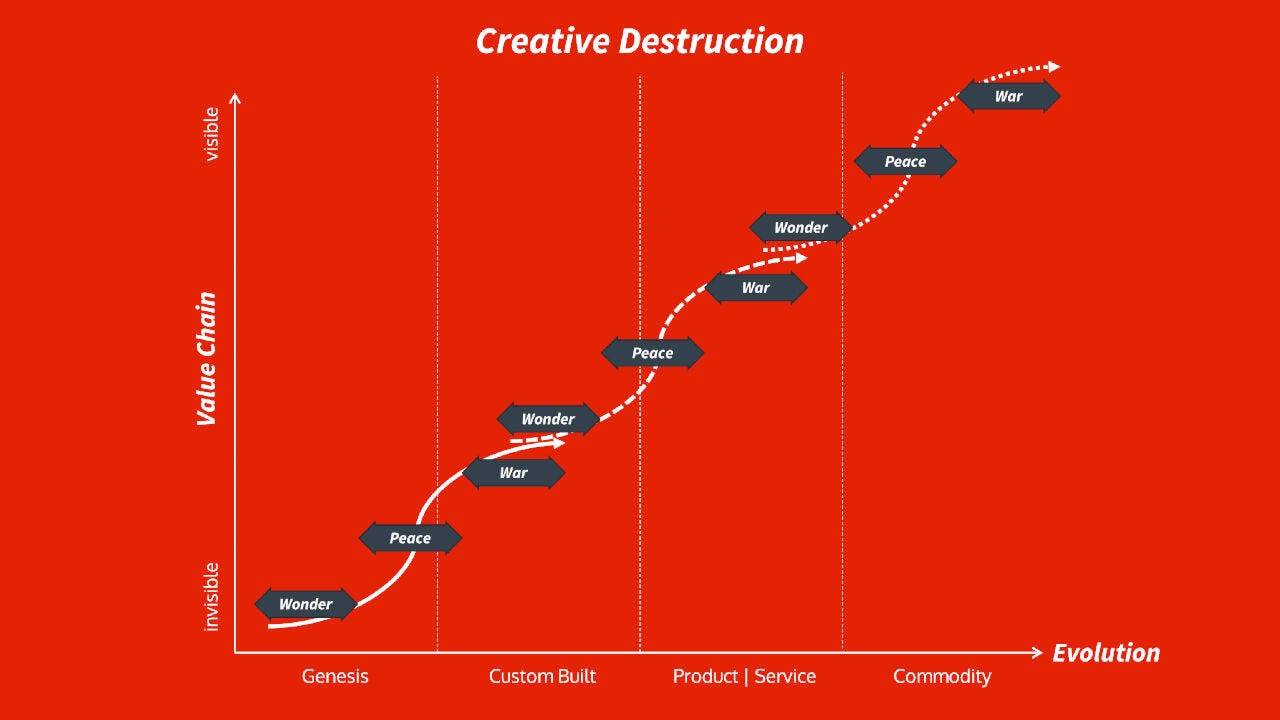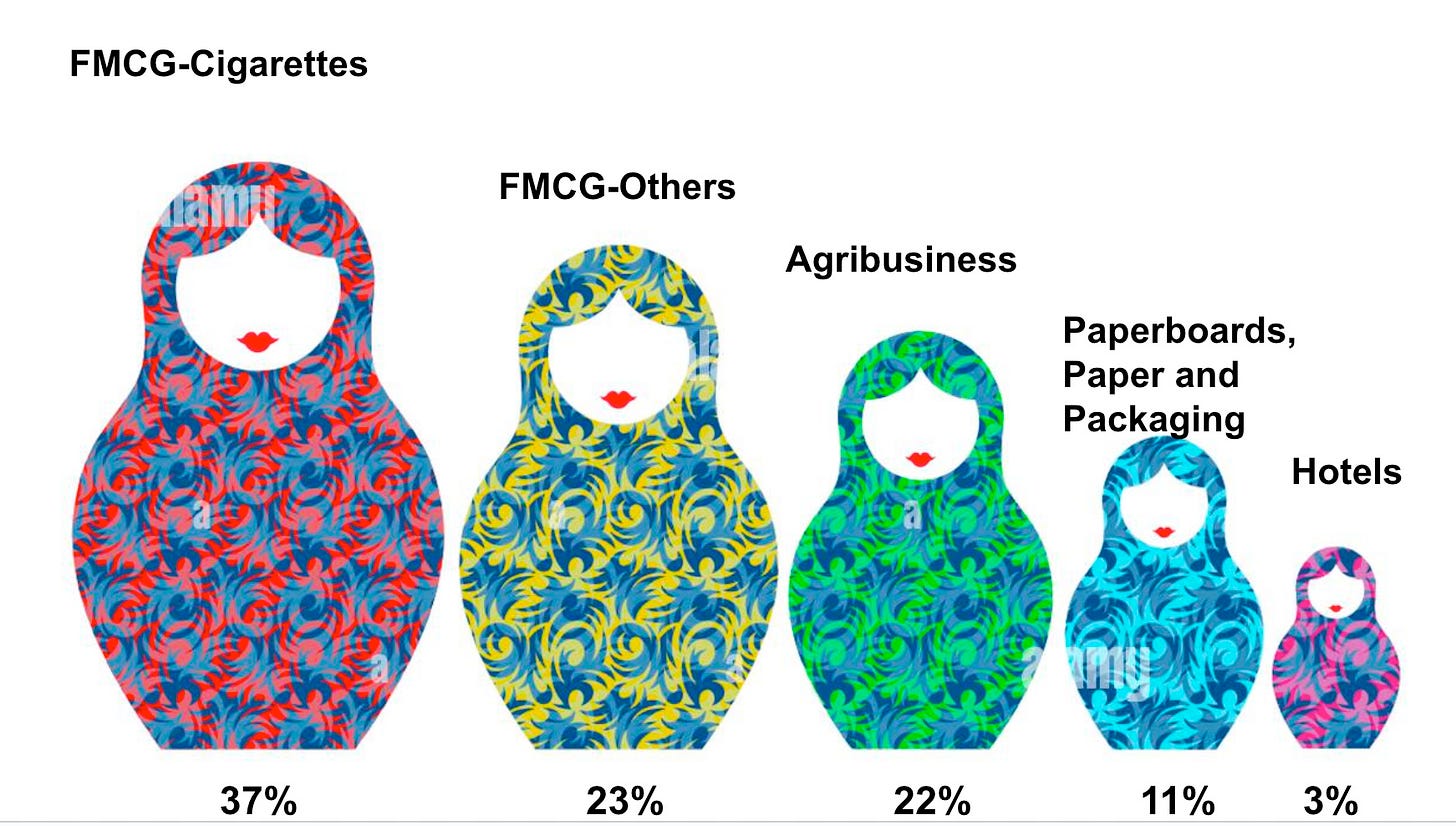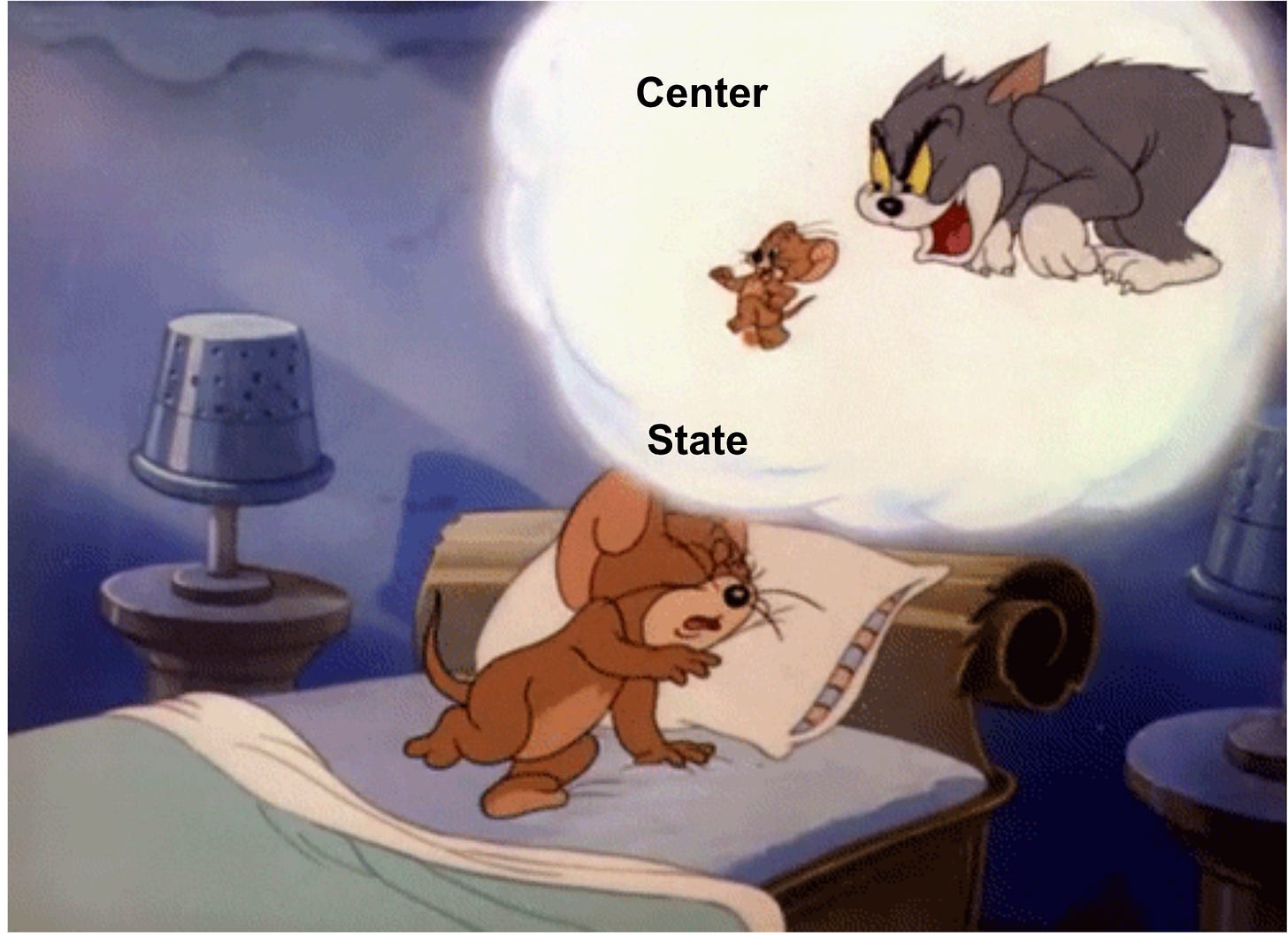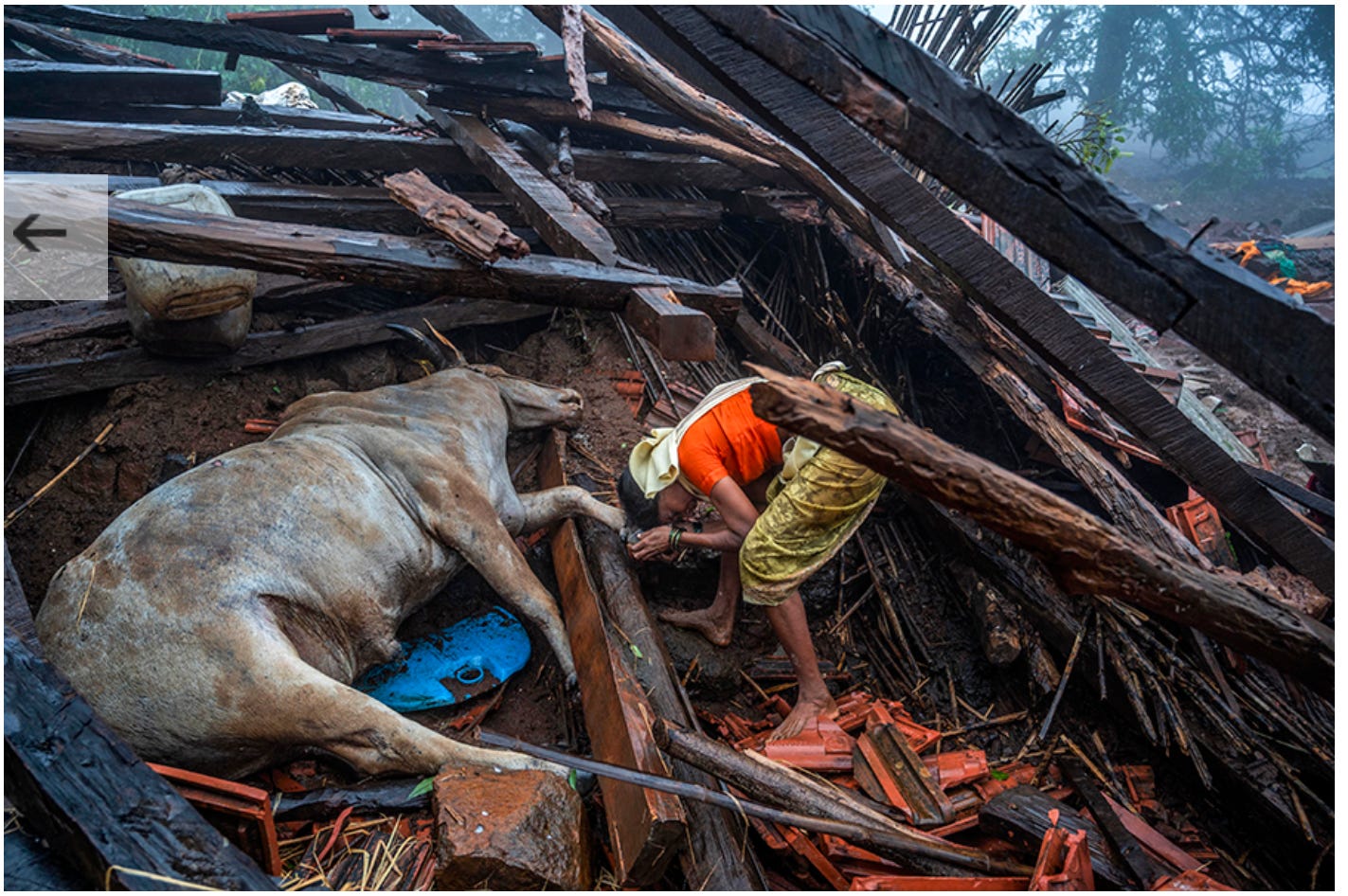Saturday Sprouting Reads (Agri-Input Biologicals, ITC, DPI/DPG, Climate Change Vs Climate Change Agenda)

Dear Friends,
Greetings from Hyderabad, India! Welcome to Saturday Sprouting Reads!
About Sprouting Reads
If you've ever grown food in your kitchen garden like me, sooner than later, you would realize the importance of letting seeds germinate. As much as I would like to include sprouting as an essential process for the raw foods that my body loves to experiment with, I am keen to see how this mindful practice could be adapted to the food that my mind consumes.
You see, comprehension is as much biological as digestion is.
And so, once in a while, I want to look at a bunch of articles or reports closely and chew over them. I may or may not have a long-form narrative take on it, but I want to meditate slowly on them so that those among you who are deeply thinking about agriculture can ruminate on them as slowly as wise cows do. Who knows? Perhaps, you may end up seeing them differently.
{Subscriber-Only}Mapping State of Agri-Input Biologicals: Global vs. India
The global agri-input biologicals market and the Indian Agri-Input Biologicals Market are like chalk and cheese.
As an independent agritech strategy consultant, I focus a lot on situational awareness for agritech founders and investors to read the market signals well.
The point is simple. If you want to play strategic moves of chess, you need to have a good sense of the board, the landscape and how it is currently looking. Trying to figure out strategic moves without understanding the landscape is often like trying to play Chess without seeing the board.
Why is the Global Agri-Input Biologicals Market different from the Indian Agri-Input Biologicals Market?
To understand this question, we need to understand a fundamental fact: Every technological innovation goes through 3 phases.
1) Wonder - When commoditization of the previous innovation (synthetics in this case) has kicked in, things that seemed economically unfeasible now seem feasible. Of course, since innovations are novel and certain, it is a gamble move played by early entrants in the ecosystem who are daring to take risks and get rewarded disproportionately.
2) Peace - In the Peace stage, because there are higher margins, the bigger players and smaller players start coopting each other. They figure out ways to jostle for position with each other.
In the Peace stage, synthetics and biologicals try to coopt with each other making sure that each has its place.
3) War - When innovations slowly become common and understood. It is suitable for industrialization and standard solutions. However, existing giants resist change, so new entrants introduce more commodity forms. These new entrants may include former consumers with enough experience and skills to provide the activity differently.
This is what is happening in the Indian agri-input biologicals market where players are open-sourcing the biologicals ecosystem and further commoditizing the space.
More on Peace, War and Wonder Stages, what changes are happening in the Indian Agri-Input Biologicals in a recent edition of Agribusiness Matters.
{Subscriber-Only} Making Sense of ITC’s Matryoshka Agritech Strategy
Every time I chat with my friend Sriram Sankaran, we end up talking about how agritech business models in smallholding contexts start to look like Matryoshka dolls.
As Wikipedia boringly puts it, they ‘are a set of wooden dolls of decreasing size placed one inside another.’
When I start to place ITC’s share of revenue segments of decreasing size(contribution) based on FY 23 fiscal numbers, it suddenly clicks why ITC has been able to be the ‘largest procurer of agri commodities in the private sector, sourcing 4.5 million tonnes across 20 value chains in 22 States’.
In classic corporation communication speak, words like ‘convergence’, ‘synergy’ are vacuous filler phrases. In an ITC agritech context, they are precise articulations of strategy delivered through this interplay of different matryoshkan doll-like vectors. Why do agritech business models in smallholding contexts look like Matryoshka dolls? How to understand the ITCMAARS phygital ecosystem in its fourth stage of evolution of eChoupal?
In my recent subscriber-only edition of Agribusiness Matters, I look at ITC’s agritech gameplay, starting off from its 112th Annual General Meeting and look at the four stages of the evolution of eChoupal and decipher ITCMAARs phygital ecosystem.
Rough Field Guide to Implementing Digital Public Infrastructure in Indian Agriculture
I published this article under the paywall on 30th August edition for subscribers. I decided to open this up outside the paywall.
Riding on the success of the UPI payment stack, Digital Public Infrastructure packs a lot of promise. For DPIs to unlock value for farmers in an Indian agricultural context, it has to tackle three fiendishly complex challenges that would probably make AGI (Artificial General Intelligence) computational problems child’s play in comparison.
unified farmer database
a live database of land records
a live database tracking crops sown in every season
Let’s unpack each of these challenges step by step and intuit field implementation challenges.
1. Indian farmers don’t have a singular definition for good, bad and weird reasons.
In other words, when we use this umbrella term called FARMERS in an Indian context, we are simultaneously referring to
Part-Time Tenant Farmers
Agricultural Labourers
Share-Croppers
Tenants
Poultry and Livestock Rearers
Fishermen
Beekeepers
Gardeners
Pastoralists
Non-Corporate Planters and Planting Labourers
Those engaged in Sericulture, Vermiculture and Agroforestry
In Dec’21, the Indian Government announced that they were in the process of creating a new digital ID for farmers. If this gets launched across the country (ideally without fanfare) and quietly integrated with Direct Benefit Transfer for cash-based disbursement of fertilizer subsidy (which it has been trying hard to curb leakage through technology), there is a glimmer of hope.
2. Land record modernisation systems can be weaponized, lack unstructured context metadata to track provenance and are riddled with structural challenges
The western state of Maharashtra passed the Maharashtra Agricultural Land Leasing Act, 2017 a month ago, followed by the southern state of Tamizhnadu going through the Governor’s assent in the Land Consolidation Act., followed by the state of Karnataka reversing its earlier land reforms.
So a mixed bag of hope and despair:) Although the need for land leasing reforms has been more vocal over the past few years, these are very early days for such reforms to bring real changes in the ground. Once there is enough political will (and that’s a tall order of expectation) to resolve the inherent contradiction between treating land as a resource and commodity simultaneously in these land record modernisation systems, there is a glimmer of hope.
3. Crop sowing data requires deep, decentralized, crowdsourced collaboration of traders
Tracking crop sowing data on a digital scale for the hyper complexity scenario India presents requires a massive trust battery between the Centre, State, Private, Public, and a variety of stakeholders. This is a fascinating multi-player coordination problem that deserves a million-dollar cash prize for the smart geek who can navigate through the maze of private and public agricultural systems,
Most well-intended agritech innovations that aim to solve population-scale challenging problems like seed traceability fall between the coordination cracks of the State and the Center.
While I hope cooperative federalism finds its calling among the powers and shakers at the policy end of this wicked challenge, for techies like us, the challenge is straightforward.
When you are designing a digital public infrastructure, it is important to understand the subtle yet crucial difference between tools and infrastructure.
Tools have one (or a few) specific purposes. Tools solve a problem. And solving the problem can be measured. Hence, tools are predictable.
Infrastructures don’t have a well-defined purpose. Infrastructures are largely undefined, and general purpose, but they open up a realm of new possibilities. They are unpredictable!
The keyword is unpredictable.
In my earlier life, my day job involved building open collaboration systems and so this distinction has been burnished deeply into my skull.
“an essential characteristic of eCollaboration technologies is a form of openness that can best be expressed in German language as Nutzungsoffenheit, whereby the artifact does not lend itself to or even determines a particular form of usage. (…) Nutzungsoffenheit means that the true nature and potential of such technologies does only manifest when people make sense of and incorporate them in their day-to-day work routines. In essence, the technology and its set of features do not precipitate its forms of usage.” (Riemer/Steinfield/Vogel 2009, p. 186)
How do we create the conditions for DPIs where users are experimenting with these tools without precipitating their forms of usage?
Given how Indian agriculture has been designed in its foundational constitutional element with the State and Center playing Tom and Jerry games of dominance, how do we create conditions for the State to launch their respective state DPIs and DPGs?
Now wait.
Why not look at the entire cooperative federalism project as a bunch of foundational rules that have to be followed under the policy protocol between the Center and the State?
Wouldn’t that be a truly exciting future for agriculture?
Climate Change Vs Climate Change Agenda
The ongoing Chess battle involving every tactic of narrative warfare between the Status Quo and the Urgency of Climate Change has intensified over the past few years. Funnily enough, it has even entered my anonymous newsletter feedback page.
“Climate Change is a fraud and the ideological narrative is doing the work for the controlling globalists. They will. Those nations pay your sovereignty for them.”
I began to mull over this with anti-ESG crusader Vivek Ramaswamy climbing up the popularity charts in the run-up to the US elections. This soundbite in one of his debates especially piqued me a lot.
If I wear a spin doctor hat, this is fascinating at many levels. The genius of this rhetoric is this - It speaks to both Status Quo Climate Deniers and the Urgency ends of Climate Change Chess simultaneously.
When you read this classic obfuscatory rhetoric, you are not sure if Vivek is subtly saying how bad Climate Change is (because people are dying of bad climate change policies) or how overblown the Climate change threat is (because people are dying only because of bad climate change policies and not by actual climate change).
When you are faced with a narrative salvo such as this, you can’t simply dismiss it as baseless claims and go mindlessly with a counter-attack.
Now why am I discussing all of this? Whether you like it or not, if you are working in agriculture, you are at the forefront of the Climate Change Chess battle happening in our midst.
When I think of Climate Change and its devastating impact on agriculture, this haunting image comes to my mind.
This haunting image of Ragi Pardhi praying to her beloved bull in the recent landslide incident at Irshalwadi village in Maharashtra poignantly captures the perfect moral storm confronting us in an age of runaway Climate Change.
What do we do when those living zero-carbon footprint lives, those living on the teetering edge of climate chaos with deep sensitivity towards nature are those who are the most vulnerable to climate change?
When Vivek claims that there are more people dying of bad climate change policies, there is a grain of truth in it.
Let us take this land-slide incident. It is not that we weren’t adequately warned.
In 2010, when the then Union Environment Minister Jairam Ramesh appointed the Western Ghats Ecology Expert Panel (WGEEP) headed by ecologist Dr Madhav Gadgil, the committee had proposed a plan to avert such disasters with a clear recommendation to demarcate a large chunk of the Western Ghats as an ecologically sensitive zone. However, this policy lever failed to bring change onto the ground as the stakeholders couldn’t allay fears of the hindrance of development and loss of livelihood.
As India plods its way to becoming the world’s third-largest economy in the world, what does it take to raise the bar with climate-sensitive infrastructure that protects those living on the vulnerable edge?
I will continue to explore this question forward.
So, what do you think?
How happy are you with today’s edition? I would love to get your candid feedback. Your feedback will be anonymous. Two questions. 1 Minute. Thanks.🙏
💗 If you like “Agribusiness Matters”, please click on Like at the bottom and share it with your friend.



